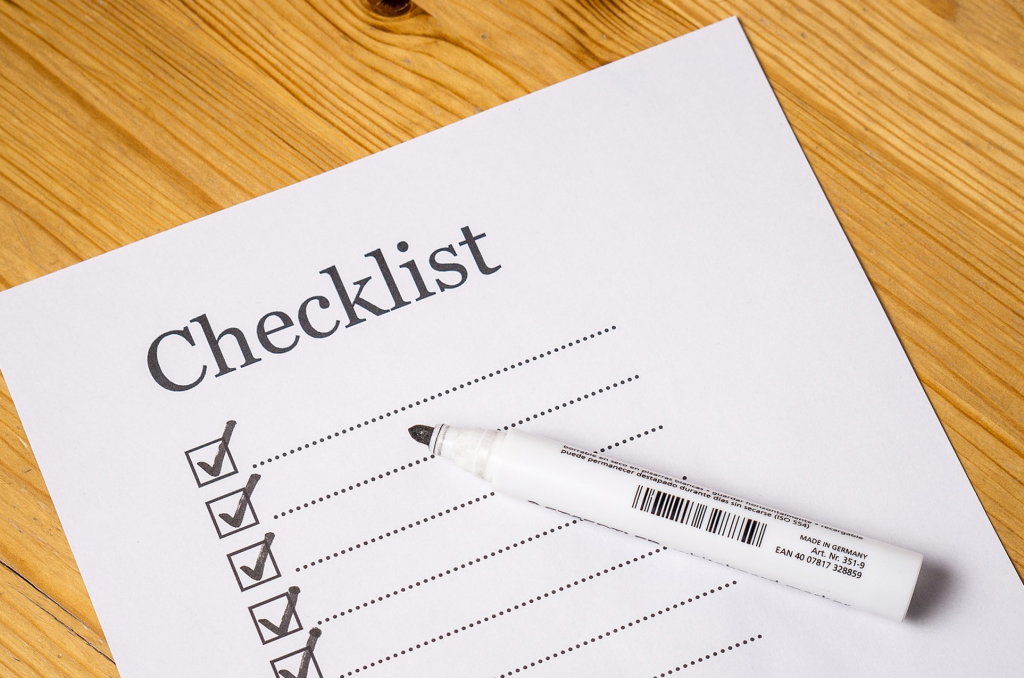After writing my last blog post, I realized it may still be challenging to determine which online articles represent fact or fluff. So, I created an article credibility checklist! Use this tool to measure the credibility of articles that discuss findings from research studies. This tool will help you distinguish between trusted and poor-quality sources of information.
The article credibility checklist consists of ten “yes” or “no” statements. To use this tool, pick an online article that describes a research study and select either “yes” or “no” for each statement. When you are unsure of what to pick, go with your gut. Once you’ve read through and checked each statement, tally all your “yes” responses. The final score will help you assess the credibility of the article you read.
It doesn’t mean the information is false if your article does not receive a high score. What this indicates is that the source may need to be more reliable. It would be best if you read the original publication to understand the findings in this scenario better. Also, if you don’t have access to the original article, you could find another online article that better describes the research study.
Below are the ten statements for the article credibility checklist:
1. The author specifies the researcher/s who conducted the original study
2. The article includes references, citations, and links to support their claims
3. The article is written fairly and neutrally and is free from exaggeration
4. You can find the original study based on the information provided
5. You know how many people participated in the original study
6. You can make reasonable conclusions from the information provided
7. The article was published by a trustworthy source
8. The content of the article appears to be accurate, factual, and recent
9. The article appears to be free from bias and objective
10. The findings can be supported by other sources
The scoring guide below helps you determine the credibility of your source.
0-2 Questionable —The article likely misses key information from the original study. The reported information is probably not objective and unbiased, making it unclear whether the source can be trusted.
Advice: For questionable sources, see if you can find another article on this topic or the original source.
3-4 Poor — The article may be based on solid research, but the author doesn’t provide sufficient details about the study. There is room for improvement in how the study is described, and the findings are shared. The credibility of the article cannot be fully trusted.
Advice: For poor sources, search for another article on this topic or the original source.
5-6 Average — The article adequately presents the original study and contains some helpful information. You can identify who conducted the study and find the original study. Therefore, you can trust the credibility of this article, but there are likely better articles on this topic. Most articles you evaluate with the article credibility checklist will receive this score.
Advice: For average sources you can trust the content of this article. However, consider other articles on this topic to get the full story.
7-8 Good — The article represents a credible source. You can trust that the author tried to convey the original article in an unbiased and accurate way. While the article only provides some of the information you may want from the original source, it provides sufficient detail to understand the basic tenets of the research. The author likely cited their sources and connected the reader to additional information to support their claims.
Advice: For good sources, you can trust the content of this article.
9-10 Excellent — The article represents a credible source. You can trust that the author conveyed the original article in an objective, unbiased, detailed, and accurate way. This article is likely from a well-established source that vets their authors carefully. The author and article are both credible and provide reliable information.
Advice: For excellent sources you can celebrate. Congratulations! This article is the next best thing after the original study!
For additional information on vetting the credibility of online articles, check out these other links and resources. There are a lot of great materials out there!
Feel free to contact me with any research and evaluation questions or needs at annette@researchevaluationconsulting.com


Annette,
Thanks so much for posting this! Oftentimes there are research-based claims in articles that appear too extreme to be true. I think using this checklist is a great, quick way to see if the source can be reasonably trusted. Thanks for sharing!
Good web site! I really love how it is easy on my eyes and the data are well written. I am wondering how I might be notified whenever a new post has been made. I’ve subscribed to your RSS which must do the trick! Have a great day! ekfegfafeafeecgk
Glad you found this website useful! I’ll have to speak with my web developer about ow to notify people whenever a new post is made.
Thanks for the article, is there any way I can receive an email whenever you publish a new update?
Hi, I am working in survey sites for last three months. I am looking for the correct way of doing survey task successfully. I am pleased to read your articles. I have lot of gaps that i can overcome by following your guidences. I am working in dailyonlinesurvey too.
Using this checklist is a great deal also worth checking the trust factor. Anyway thanks, nice to read.
Your blog is a testament to the power of positivity and resilience.